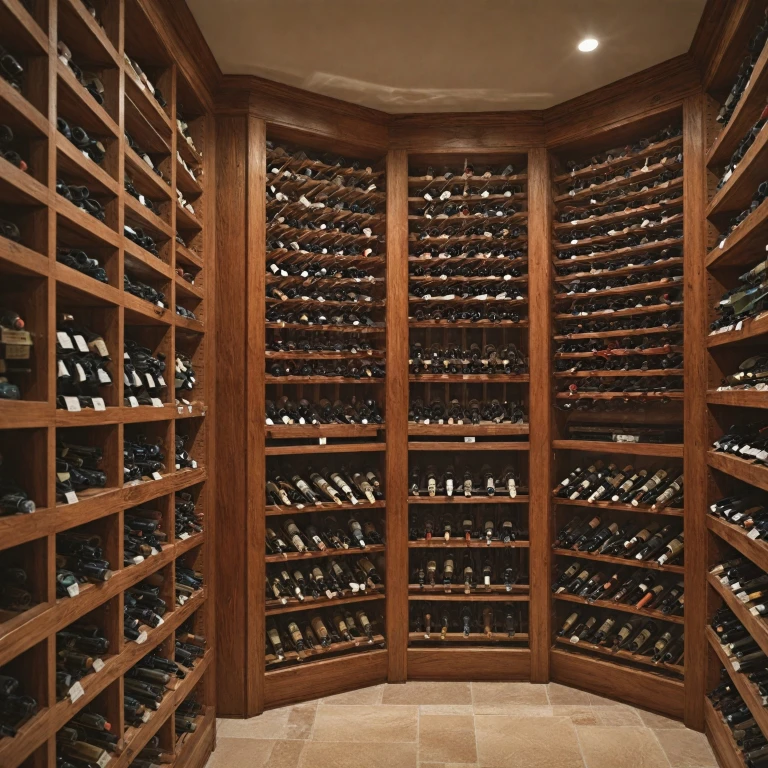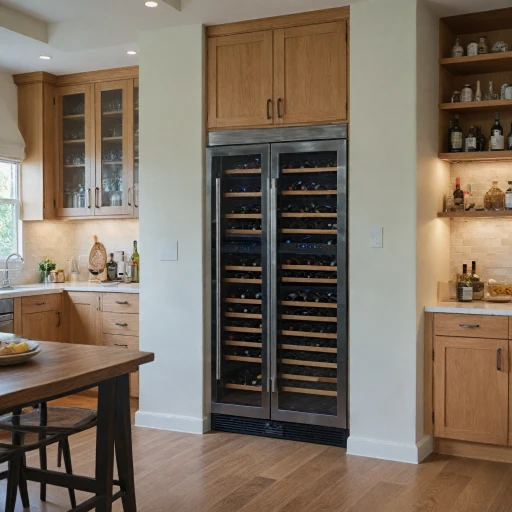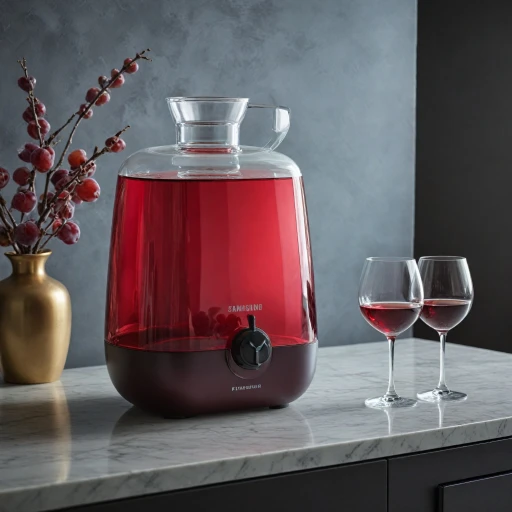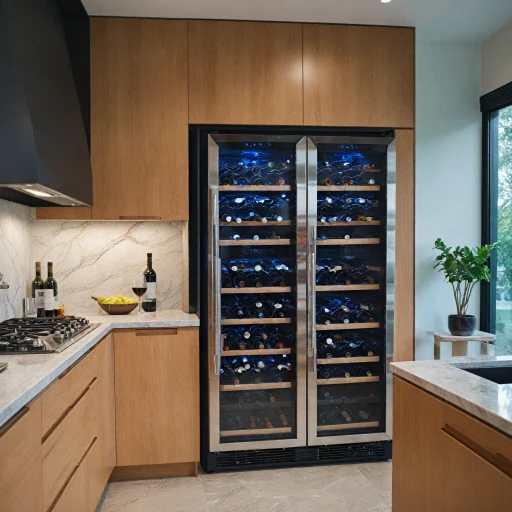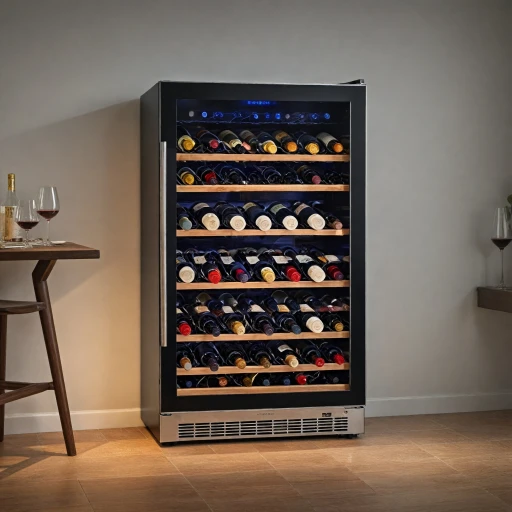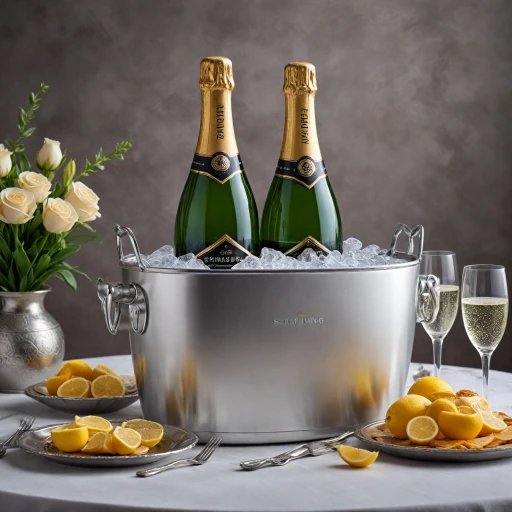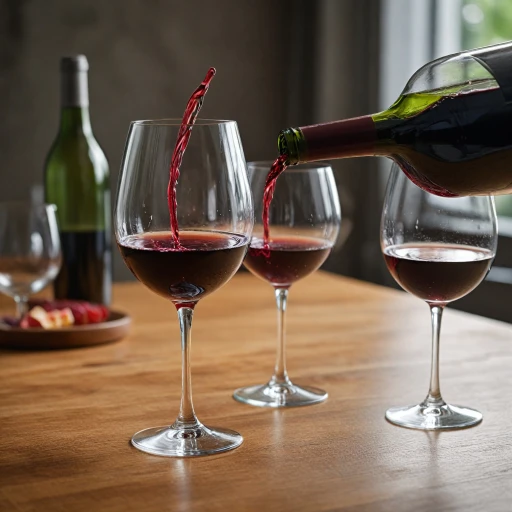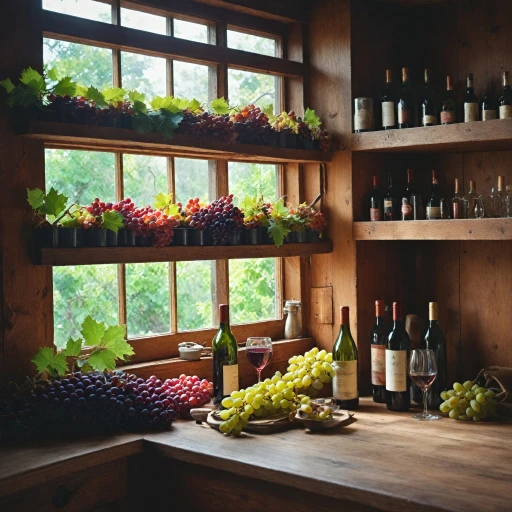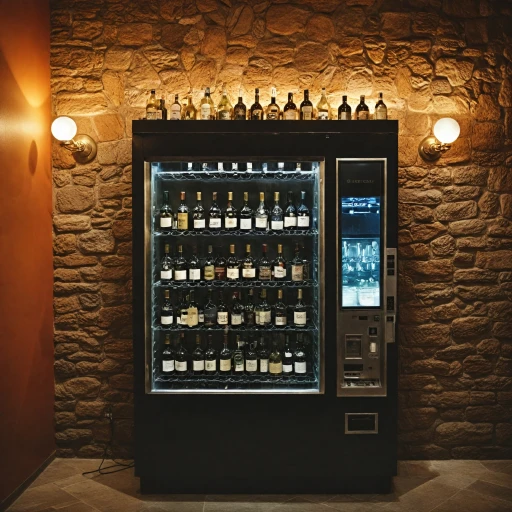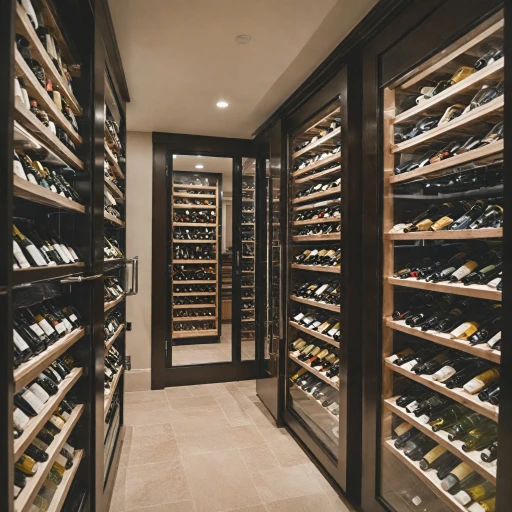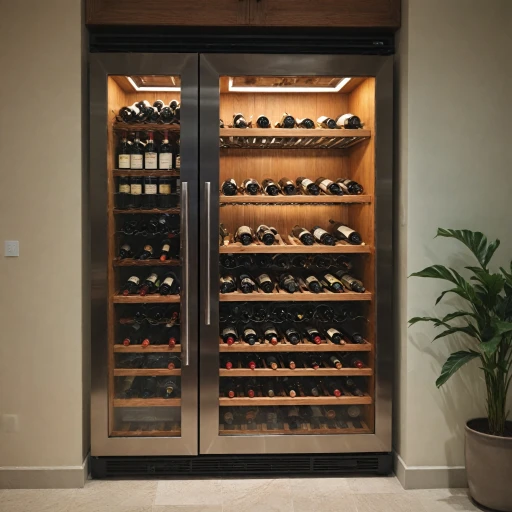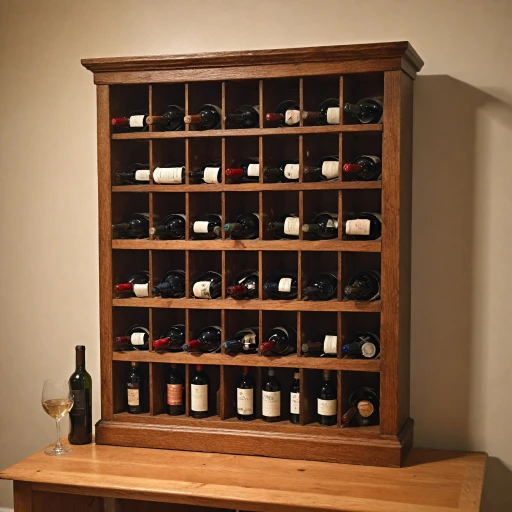
The Importance of a Wine Cellar Cooling Unit
Ensuring Optimal Conditions for Your Collection
A crucial component in maintaining your wine collection over the long term lies in the proper regulation of its environment. This is where a wine cellar cooling unit proves indispensable. Essentially, the cooling system works tirelessly to maintain the optimal temperature and humidity levels, crucial in preserving the delicate balance of flavors in your wines.
Wine is highly sensitive to fluctuations in temperature and humidity. When these factors are uncontrolled, it can lead to detrimental effects, such as the deterioration of wine quality and possible spoilage. A well-maintained cellar cooling system ensures that the temperature is kept within a range of about 50-59°F (10-15°C) and humidity levels between 50-70%. This careful calibration helps prevent adverse conditions like dry corks or wine seepage.
The importance of a dedicated cooling unit becomes even more apparent when considering the varying storage requirements of different wines, such as whites and reds, each necessitating tailored conditions. The installation of a cellar cooling unit also aids in managing the heat load which can otherwise disrupt the storage environment.
For more insights on maintaining the perfect environment for your wine collection, you can delve into the art of crafting your own thermostatic wine cellar.
How Wine Cellar Cooling Units Work
Inside the Wine Cellar Cooling Process
To fully appreciate the significance of maintaining an optimal environment for your wine collection, it's crucial to understand how wine cellar cooling units operate. These systems are designed to maintain both the temperature and humidity at levels that preserve the quality of the wine. Wine cooling systems use a variety of methods to achieve a controlled environment. Many units, such as the split systems, rely on a separate condenser that can be installed outside the living area, reducing noise and vibrations. This setup is particularly effective for large cellars where heat load needs careful management.The Role of Temperature and Humidity
Temperature is a core factor in wine storage. Ideal storage usually ranges between 45 and 65 degrees Fahrenheit, with 55 degrees being optimal. This consistency is where wine cellar cooling units excel. Designed to counteract external temperatures, these units ensure your treasured collection remains in perfect condition. Humidity control is equally vital, preventing corks from drying out, which could compromise the wine's quality. A typical system will maintain humidity levels between 50% and 70%, safeguarding against both mold growth and drying.Explore Design Options
There are multiple configurations of wine cooling systems available to address varied storage requirements. Contained units can effectively manage the conditions for smaller cellars, while fully ducted systems offer a discreet solution for larger spaces, blending into the interior design seamlessly. Wall-mounted units and ceiling mount options provide additional flexibility, accommodating different cellar layouts. With choices ranging from fully ducted to self-contained units, there's a solution tailored for any wine enthusiast. Choosing the right system isn't just about the cellar's size. Factors such as cellar insulation, installation location, and intended use—short-term enjoyment or long-term aging—play essential roles. For more detailed insights into selecting the perfect wine cellar cooling unit, explore guidance on choosing the right wine cellar cooling units for your collection. Understanding these fundamentals empowers you to make an informed decision that benefits your wine collection for years to come.Types of Wine Cellar Cooling Units
Varieties of Cellar Cooling Systems
A pivotal aspect to consider in wine cellar management is the variety of cooling systems available. Selecting the appropriate type can significantly affect the preservation and longevity of your wine collection.- Split Systems: Often favored for their flexibility and reduced noise, split systems separate the condenser from the evaporator. This arrangement allows the condenser to be installed outside or in an insulated area, delivering effective temperature and humidity management.
- Self-Contained Units: These options offer easy installation, as they combine the condenser and evaporator in a single unit. Ideal for smaller cellars or spaces where ease of use is a priority, these units are typically installed through a wall.
- Ducted Systems: For those looking to minimize noise within the cellar, ducted systems are a choice worth considering. These fully contained cooling units install either above the ceiling or in an adjacent room. They provide even air distribution, maintaining optimal conditions throughout the storage space.
- Ceiling Mounted Units: If space optimization is of concern, ceiling mount cooling units may be the solution. They maximize the available floor and wall space for wine racks and shelving while ensuring effective cooling.
Choosing the Right Cooling Unit for Your Cellar
Selecting the Ideal Cooling Setup for Your Wine Haven
Choosing the right cooling unit for your wine cellar is a critical decision that impacts the preservation of your wine collection. Several factors come into play when selecting the most suitable system for your setup, including cellar size, location, budget, and installation preferences. Start with assessing the size of your wine cellar. Larger spaces demand more robust systems, possibly necessitating the use of split systems or fully ducted configurations. These systems separate the condenser from the cooling unit, typically placing it in an insulated location to minimize noise and manage heat load effectively. For smaller cellars or spaces with less insulation, contained units or ceiling mount cooling systems provide a compact yet reliable option. These all-in-one systems generally require less installation complexity and can be ideal for tighter spaces or where minimal disruption is preferred. Temperature and humidity control is pivotal in maintaining ideal wine storage conditions. Units should offer specific settings for both these parameters, accommodating the delicate requirements of your wine collection, from red to white and everything in between. Budget often dictates what cooling options are feasible. While split systems and fully ducted units might come with a higher initial cost, their efficiency and ability to maintain stable conditions could reduce long-term expenses related to wine spoilage or system maintenance. Finally, consider the aesthetic aspect. The placement of the cooling system should not detract from the cellar's ambience or the arrangement of wine racks. Wall mounted or ceiling systems might offer a more discreet approach, blending seamlessly with the cellar design. Ultimately, the goal is achieving optimal storage conditions that reflect the unique needs of your wine collection, ensuring both short-term pleasure and long-term preservation.Installation and Maintenance Tips
Installation Best Practices and Maintenance Tips
Proper installation and maintenance are key to ensuring the optimal performance of your wine cellar cooling system. Whether you're considering a fully ducted setup or a self-contained unit, these best practices and tips will help in extending the life and efficiency of your system.- Professional Installation: It's advisable to enlist a professional to install your wine cooling units. They have the expertise needed to account for factors like heat load and airflow, ensuring that the unit functions correctly from the outset.
- Positioning: The location of your unit, whether it is a ceiling mount or wall unit, plays a significant role in its efficiency. Ensure that your space is well insulated to maintain stable temperature and humidity levels.
- Consider the Environment: The external environment impacts how your unit operates. A split system, for instance, can be ideal if there’s limited space for air circulation. However, with any split systems, ensure that the condenser is placed where it can release heat effectively.
- Regular Maintenance: Regular checks can keep your cooling unit in good working condition. This includes cleaning the filters and inspecting the coils for dirt buildup, which can hinder performance.
- Monitor Temperature and Humidity: Use a reliable digital thermometer and hygrometer to frequently monitor the temperature and humidity levels in your wine room. This is especially crucial for long-term wine storage.
- Troubleshoot Common Issues: Familiarizing yourself with potential issues that might arise, such as fluctuations in temperature or unusual noise, allows for timely troubleshooting. Addressing these issues quickly can prevent more severe problems.
Common Issues and Troubleshooting
Troubleshooting and Resolving Common Wine Cellar Cooling System Issues
Encountering issues with your wine cellar cooling system can be a source of frustration, especially when you’re aiming to maintain the perfect environment for your wine collection. As these units are crucial for controlling temperature and humidity, addressing any problems swiftly is essential. Here’s a guide on common issues and how to troubleshoot them effectively.- Inconsistent Temperature or Humidity: If your cooling unit fails to maintain a stable temperature or humidity level, check for any obstructions in the airflow. Ensure wine racks are not blocking vents. Inspect your unit’s condenser coils and clean them if necessary, as dust accumulation can impair efficiency. Also, verify that the room is properly insulated to prevent external temperature fluctuations.
- Cooling Unit Not Running: If the unit isn’t turning on, it’s vital to check the power source. Confirm that your cooling unit is plugged in and the power outlet is functioning. Also, inspect the unit’s thermostat settings as they might be set too high, thus causing the system to remain off.
- Excessive Noise: Noise can come from several components such as the fan, compressor, or loose parts. Regular maintenance like tightening screws or replacing worn-out fan blades can often resolve noise issues. If the problem persists, you might need to consult a professional for more technical concerns.
- Frequent Cycles: A cooling system that frequently switches on and off may be undersized for your wine cellar's heat load. Reassess the size and capacity of your unit. Choosing between an ecx cooling system or a split system, for example, should accommodate your cellar’s specific demands.
- Leaks or Water Dripping: Excessive condensation may lead to leaks, which is often a sign of improper humidity setting or a blockage in the drainage. Ensure your fully ducted or ceiling mount unit is at the correct humidity level and that drains are not clogged.

